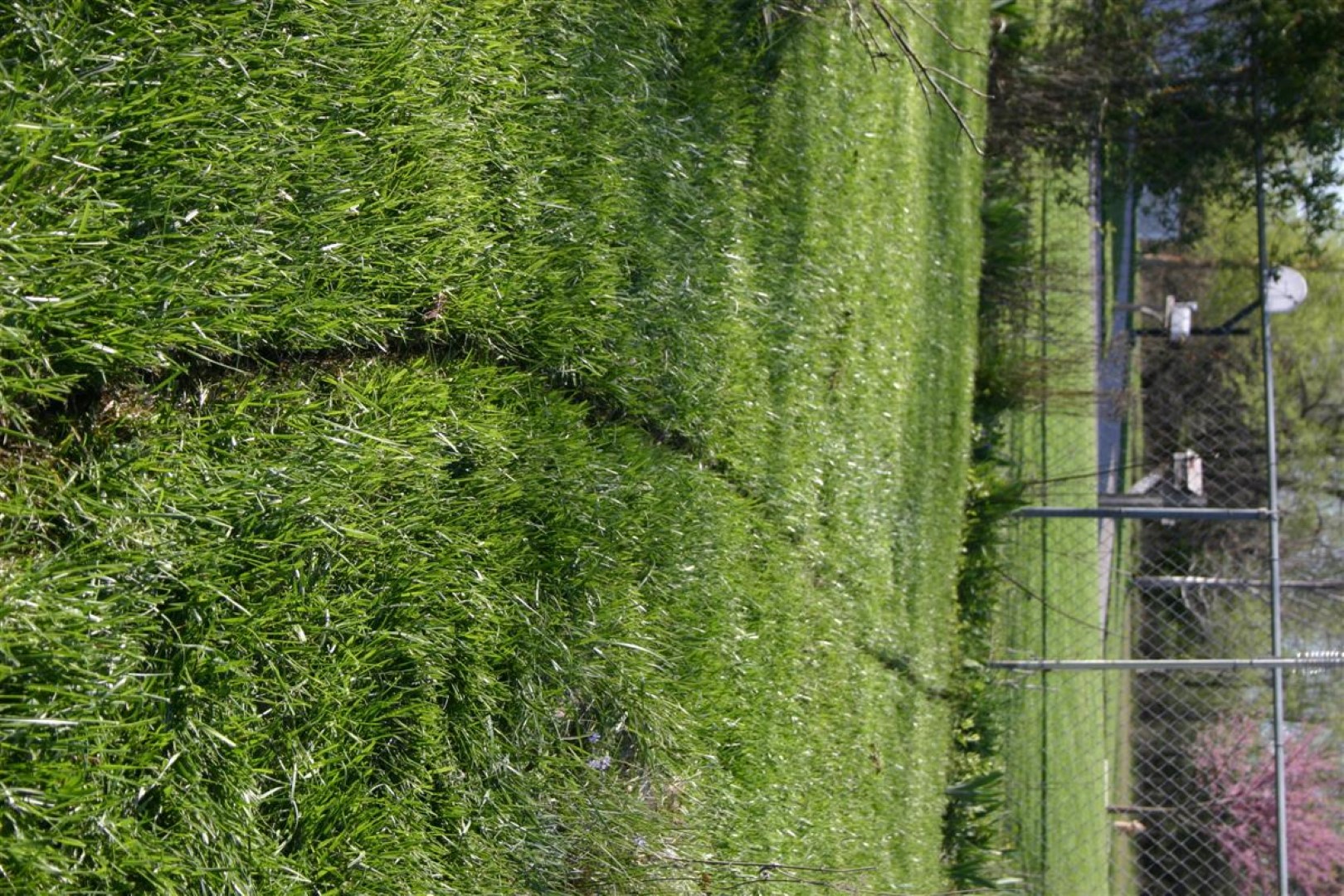Burying Radials and Cables

While they'll work without and you will make contacts, ground-mounted vertical antennas such as this Butternut HF6V vertical will perform significantly better with radials. Keeping the radial wires out of the lawn mower can be a task, as is getting the feedline in the middle of the yard. Fortunately, I found a way to do both quickly and easily.
My vertical is mounted at ground level near the rear of my lot. Behind the chain link fence is an easement area so for my radials I was able to cross under the fence and extend out behind.
Contrary to what some hams would tell you, radials for a ground-mounted antenna such as this one do not need to be cut to an exact length. Ideally at least some of the radials would be 1/4 wavelength long for the lowest frequency, but in my case that just wasn't physically possible at the 80m band lengths.
The number of radials are important and 3-4 should be considered the bare minimum, and 8-12 being a good compromise. I've seen some hams put dozens of radials in the ground and while more radias does improve performance, there comes a point of diminishing returns.
I started by mapping out how I could evenly disburse eight radials in approximately opposite directions. Yard obstructions, the fence, a swimming pool, and the property line didn't allow for perfectly symetrical layouts, but I did what I could get by with.
To get started, set the lawn mower deck to the lowest possible setting. This should almost scalp the grass, just try not to hit the dirt with the blade or else it could cause damage to the lawn. There's really no reason to mow the entire lawn at this level, just along the paths that you want to lay in radials, as in the photo below.

The key to this project is to have the right tools, which for the next step is a lawn edger. Note that this is the edger type that rides on a small plastic wheel, and contains a rotating blade, typically used to cut overgrown grass away from the edge of a curb or sidewalk.
Set the edger's blade to be as deep as possible.
Once the grass is largely out of the way, use the edger to cut a trench from the base of the antenna out to the length of the radial. It may take a little bit of back and forth to cut through all of the roots, but in the end you should have a small trench an inch or two deep.

Here is a photo of one of the trenches that I cut. This particular one was for the coax that had to zig-zag around some obstructions, hence the reason for the bend.
I used a quality direct-burial RG-8 style of coax. This particular feed has been in the ground for 10 years now and has never given me problems. Just be sure to have a full length of coax without any nicks in the jacket, and of course any form of splice under ground would be asking for trouble.

Once the trench is cut and the coax or the radial is laid out, use a small stick to push the wire below the surface of the grass. I used a small wooden stick which I cut a V notch into the bottom so that the stick didn't slip off the wire.
In this photo I'm laying the RG-8 style coax, but the process is the same for the radials. For radials, the wire type isn't terribly critical - insulated or uninsulated will work just fine. Any gauge from about 18ga or larger.

And that's all there is to it. I did my installation at the end of the mowing season when the temperatures started to cool off, as I didn't want to stress the fescue lawn too bad. By the next spring, the grass had grown up and after the first mowing you couldn't tell anything had been done.
The whole process include 8 radials and the feedline took just one afternoon.
That's been 10 years now and the antenna is still my primary antenna. I plan on proactively replacing the coax in the next year. I'll probably dig up a little bit of one of the radials to see how they're doing before I commit to reworking those.
Parts List
Lawn Mower
Lawn Edger
Direct-burial Coax
Radial Wires
Related Articles






